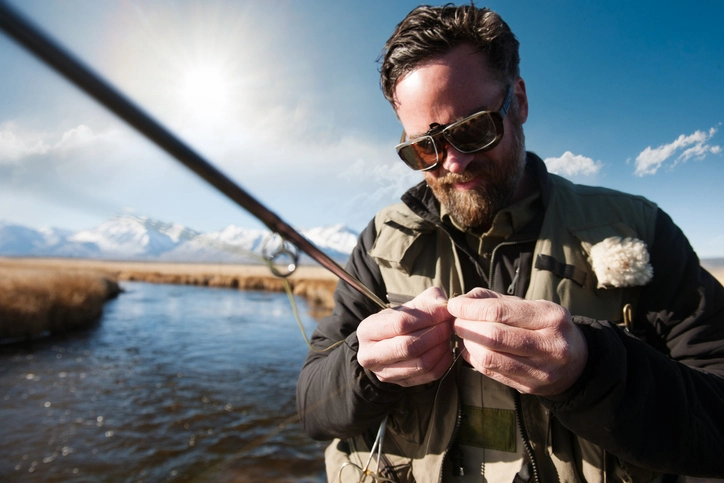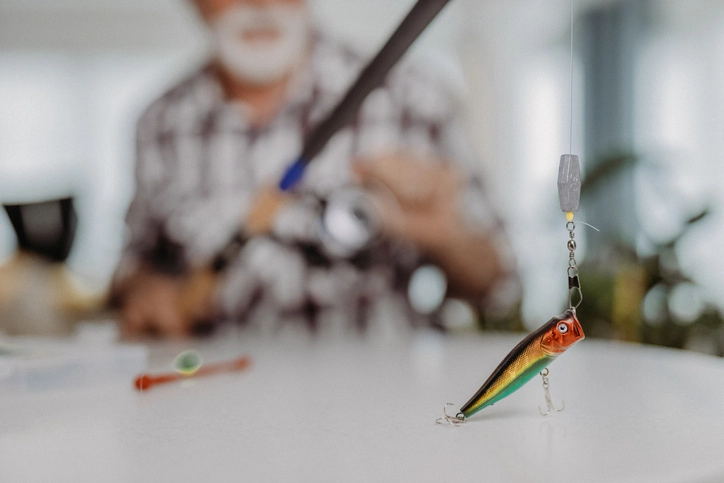Ever wondered how fishing affects rivers and the fish living there? And are you interested in pike fishing while also helping to take care of nature? Well, you’re in luck! Let’s talk about fishing for pike in a way that’s good for the environment and the fish.
People who fish can do it in a way that keeps fish populations healthy. They use techniques that are responsible and don’t harm the fish.
Let’s look at why it’s important to fish for pike in a way that’s good for the environment. We’ll also learn how to fish for pike in a sustainable way, meaning it won’t hurt the environment or the fish. We’ll challenge some old ideas and find out the best ways to fish responsibly. Are you ready to learn about ethical fishing? Let’s get started!
Understanding the Importance of Ethical Pike Fishing
It’s super important to fish in a way that keeps the fish population healthy. When we fish for pike, we must follow some good environmental rules. We want to ensure the balance of the waterways is good.
One way to do this is by using smaller bait for pike fishing. This helps protect the smaller fish. It’s also important to let the big fish go sometimes. This helps keep the balance in the ecosystem so we don’t take too many fish.
Awareness of the environment is a big part of fishing. We want to make sure we’re not harming the water or the fish. So, we should always clean up after ourselves, not leave any trash, and respect where the fish live.
Fishing in an ethical way is important for keeping the environment safe. It’s all about being responsible and ensuring we can keep fishing for a long time. By taking care of the small fish and their homes, we’re making sure there will always be fish for us to enjoy in the future.
Sustainable Techniques for Pike Fishing
Let’s check out some environmentally friendly ways to fish for pike. When people use these techniques, they help keep the pike population healthy. Plus, it makes fishing more fun. So, by fishing in a way that’s good for the pike, we also care for the rivers and lakes where they live.
Using Barbless Hooks for Minimal Fish Injury
One sustainable technique that stands out is using barbless hooks. These barbless hooks minimize fish harm by eliminating backward-facing barbs. Anglers lessen harm with barbless hooks, staying responsible towards fish.
Staying Informed with Fishing Reports
To sustain pike fishing, monitor fishing reports and stay informed. Anglers benefit from local reports for water conditions and fish behavior. Increase angler success by informing choices for sustainable pike fishing practices.
Mitigating the Impact of Invasive Species
Invasive species harm pike, disrupting freshwater ecosystems. Responsible anglers must counter invasive species to protect fish populations effectively. Familiarize with local invasive species, report findings, and spread awareness.
Contributing to Conservation Efforts
Anglers conserve pike populations and habitats through ethical practices. Anglers practicing sustainability ensure long-term pike fishing viability. Practice proper handling, adhere to catch limits, and engage in conservation efforts. These actions help sustain pike populations for future enjoyment.

Conclusion
In conclusion, when people fish for pike in a good way, it helps keep the rivers healthy. This means they’re careful about how they fish, so they don’t harm the environment or the fish.
It’s not just about catching pike. By fishing responsibly, we also help other fish, like salmon, and smaller predators. In nature, all these different kinds of fish need to stay in balance for everyone to survive. That’s why it’s important to let some fish go after catching them. This helps make sure there are always enough fish around.
Using a landing net when we catch fish is also really important. It helps keep the fish safe and reduces their stress. This is especially important for delicate fish in freshwater. So, when we fish for pike, using a landing net is a good idea to keep the fish and the environment healthy.
Doing all these things isn’t just a job. It’s also a way for us to take care of the environment. By fishing responsibly, we’re making sure that future generations can enjoy fishing too.
FAQ
What are ethical pike fishing practices?
Ethical pike fishing prioritizes pike well-being and habitat conservation. Utilizing sustainable fishing, responsible angling, and conservation strategies to protect fish and nature.
Why is ethical catch and release important in pike fishing?
In pike fishing, ethical catch and release is vital for sustainability. Releasing pike unharmed ensures survival, future reproduction, and ecological balance.
How can anglers ensure responsible angling while pike fishing?
Anglers practice responsible pike fishing with proper bait, limiting catch. Anglers must be mindful of impact on fish populations and other species.
What are some eco-friendly fishing practices for pike fishing?
Pike fishing. Use barbless hooks, and eco-friendly bait, and handle waste. Invasive species control is vital for ecological balance in pike.
How do anglers help conserve pike populations?
Anglers aid pike conservation through sustainable practices like catch and release. Respect fishing limits, and monitor habitats for pike protection. Staying informed on fishing reports and invasive species aids conservation efforts.
Should anglers use barbless hooks when fishing for pike?
Using barbless hooks is recommended when fishing for pike. Barbless hooks aid in safe hook removal, and treating pike.
What should anglers do if they catch a non-target species while pike fishing?
If a non-target species is caught while pike fishing, handle it. Release non-target species with minimal harm for safe return. Report invasive sightings.
Additional Resources:
1. delicate species like freshwater fish
2. conserve pike populations and habitats


